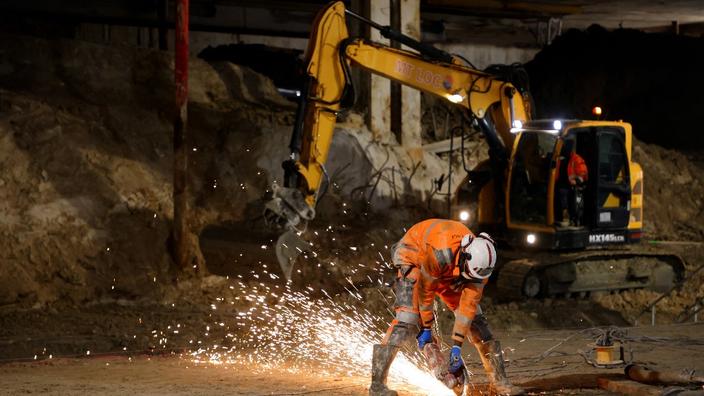A quarter of the 100 billion in the recovery plan will boost their recovery, but SMEs could be hampered by the lack of manpower.
"
Labor shortages were the number 1 concern of entrepreneurs before the crisis - it is now the sustainability of their activity - and this subject is coming back strongly with the resumption of activity
", explains. we are in the cabinet of Alain Griset, the minister responsible for small and medium-sized enterprises.
Difficulties which strike them more than large companies, more attractive in fact, and better equipped to recruit than the smallest structures.
Read also: The recovery plan is also for SMEs
Nobody escapes it
"
Almost all sectors are affected even if the tensions depend on the level of recovery of the activity
, notes François Asselin the president of the CPME, the Confederation of the small and medium-sized enterprises.
This is particularly noticeable in the sectors of construction, personal services such as cleaning or assistance to the elderly, in the digital sector but also in certain industrial sectors.
On the other hand, no shortage in services, except transport and logistics. Across all sectors, recruitment difficulties are at high levels without however reaching the 2019 records.
The Public Investment Bank and the Rexecode Business Institute indicate that 44% of SMEs will encounter recruitment problems in the second quarter of 2021, in their barometer published in early May.
This is 15 points less than before the crisis.
This can be explained in particular by the fact that partial unemployment has enabled companies to retain their workforce, thus avoiding too great a shortage today.
The reasons for the galley
In an economy where unemployment is stagnating at around 8%, this chronic lack of labor, highlighted with each expansion of activity, raises questions. “
According to Pôle Emploi, there are between 150,000 and 200,000 unfilled positions each year in France, mainly for SMEs,
” also notes the Alain Griset cabinet. "
The reasons for these shortages of manpower are known,"
continues the ministry.
It is first of all the arduousness, with difficult, demanding jobs, which still have a bad image despite the work of the federations. The attractiveness of these professions to the general public needs to be enhanced.
"
Construction has, for example, efforts to make in this area. “
We have our share of responsibility for this image
, concedes Jean-Christophe Repon, president of Capeb, the confederation of crafts and small construction companies.
We must say that it is good to live to be an employee of the building. We have salaries around 2000 euros without having unattainable levels of qualification. And, with energy renovation, we have years of work ahead of us. But we have great difficulty in finding technicians: we need plumbers, heating engineers, electricians…
”Other professions, however less painful, are struggling to get rid of an unattractive image. “
We need coders, network technicians,web designers !,
pleads for his part Alain Assoulin president of Cinov, an employers' federation which brings together 3000 digital companies.
Today we are missing 80,000 people every year in the digital world.
We do not train enough when there are plenty of new professions and new technologies.
"
And in the beginning, there is education, that given by the parents or provided by the school.
"
Companies generally recruit those who have just finished training, so you have to go upstream to understand the problem
," explains François Asselin.
It is that of a collective failure of guidance.
We do not always direct young people where there are immediate needs.
"
Read also: SMEs shun incentive and participation
(Re) take the right fold
"
This is why we made the 2018 apprenticeship reform,"
recalls the ministry of Alain Griset
.
The number of apprentices has steadily increased since we passed the glass ceiling of 500,000.
A figure, however, strongly boosted by the exceptional aid put in place by the State to support these contracts after fears that their number will collapse with the health crisis.
In 2019, there were only 353,000 apprenticeship contracts.
“
We are going in the right direction
, notes François Asselin, however.
But this will only solve the problem in the medium term: tutors are also needed in SMEs to train apprentices.
Today, the generation before is missing.
The players in the sector also stress the need to reconsider the professional fields.
In addition to the creation - or improvement - of skills, there is a need to bring SMEs closer to employment.
A study carried out in 2018 by researchers from Sciences Po and the Group of National Schools of Economics and Statistics (GENES) indicates that prospecting for advertisements for SMEs by Pôle Emploi increases the chances of filling positions by up to 40%.
"
We are currently trying to sign an agreement with them
," explains Jean Christophe Repon.
But we have to make sure before that this will allow skills to be properly targeted and that we do not miss out on opportunities
. ”
The fact remains that the lack of feminization of certain professions has the effect of a glass ceiling. Digital SMEs today only have 11% of women in their ranks, according to Cinov. This is slightly less than in industry, notes INSEE, but almost double compared to the construction sector.

